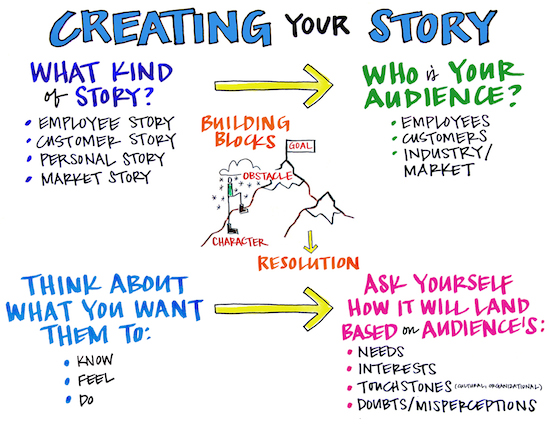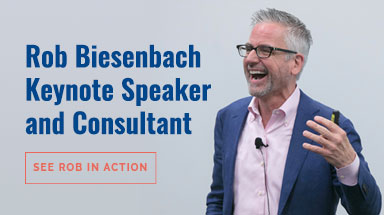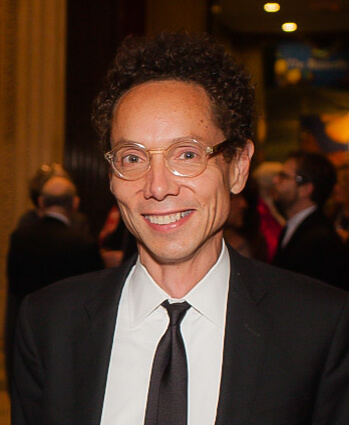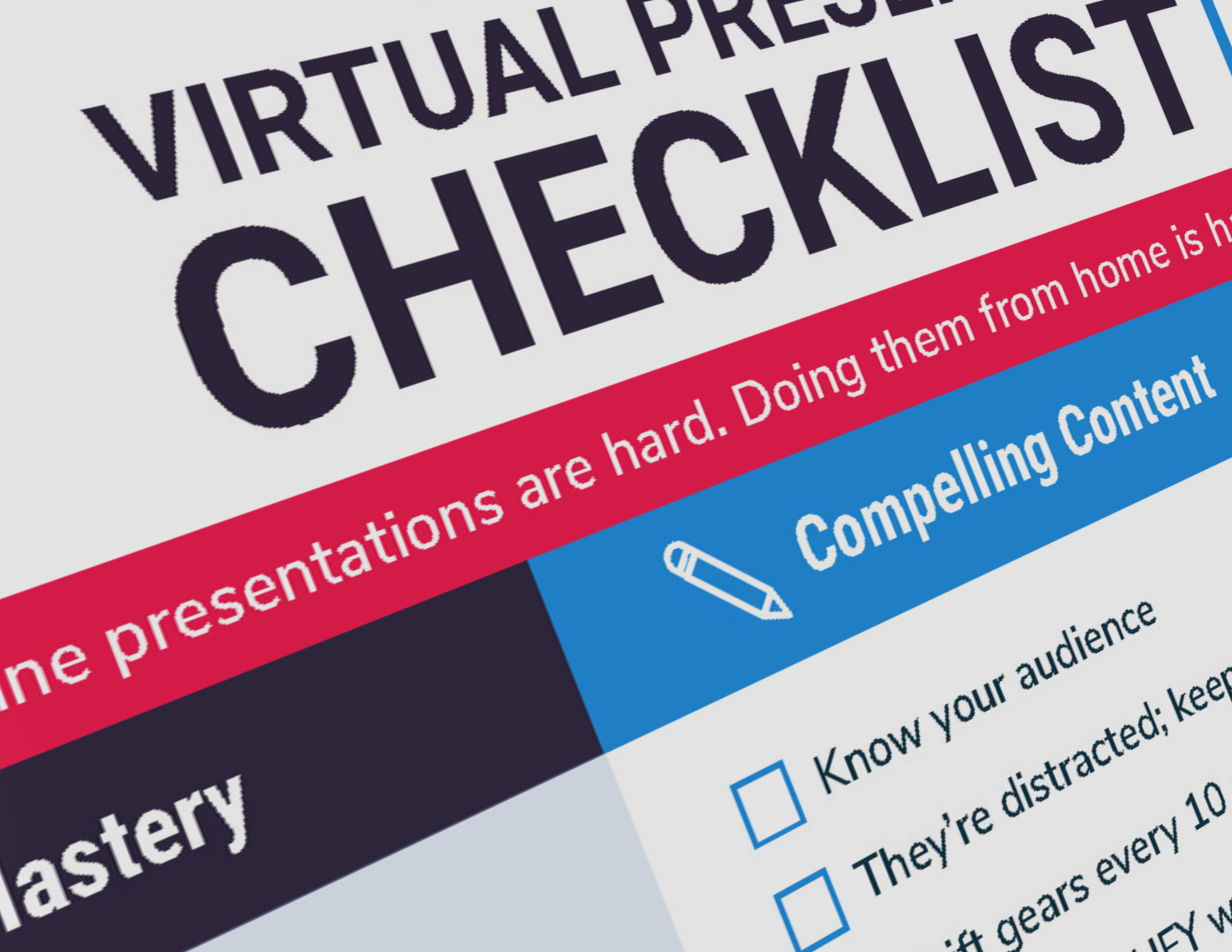On Monday I led a 90-minute storytelling workshop in New York for a CEO and his direct reports. They were trying to work out how to rally and unite their employees, but I came away with something, too: what I’m modestly calling A Grand Unified Theory of Storytelling.
The event’s organizers had an artist there doing “live drawings” on giant whiteboards, capturing the proceedings visually.
It was really, really cool, and a wonderful lesson in thinking differently. I’m not always the most visual person—I’m more of a words guys. So I’m often challenged when it comes to flowcharts and diagrams and such.
But I got to sit down with her and map out a picture of what the storytelling process should look like. It’s not perfect, and I’d like to augment it someday with some additional background, but it’s a solid start.
So here it is in all its coolness and glory. And if you’re a word person, I’ve provided explanation below the image. We’ll start in the center of the diagram, then move around clockwise from the upper left.
Storytelling Building Blocks
At the center of the diagram are the basic elements of story. You’ve got:
- A character (the more relatable the better), in pursuit of a …
- Goal, in the face of some …
- Challenge or obstacle.
How the character resolves that challenge provides the dramatic tension that keeps us on the edge of our seat.
Now there are certainly other elements of stories, but these are like the three legs of the stool. Omit any one of them and your story is weak and unstable.
Story Type
There are many kinds of stories, obviously, but for this group I defined four:
- Employee Story (where the employee is the character).
- Customer Story (where the customer is the character and the company is the wise guide or “Yoda” figure).
- Personal Story (where you yourself are the character or perhaps a secondary character to some hero).
- Market Story (this would be an analogy drawn from another company or industry that your audience can relate to).
Audience
Just as there are many kinds of stories, there are many audiences or targets for your story. These are the key audiences for this group: employees, customers and industry/marketplace.
Other audiences might be shareholders, members, government, media or the general public.
Audience Triggers
Of course, the best intended story in the world will fall flat if it doesn’t resonate with the audience you’re trying to reach. That’s why it’s important to understand them as much as possible. Ask yourself about their:
- Needs (not just their desires but the ways they prefer to receive information).
- Interests (anything that you might have in common).
- Touchstones (the deeper cultural or organizational touchstones that connect you, like pride in a company’s heritage, love for its brand or loyalty to colleagues).
- Doubts and Misperceptions (what vulnerabilities do you need to address? If they’re big, ignore them at your peril).
Know, Feel, Do
These are your goals. Think about what you want them to:
- Know (that’s the information, the data, the stuff).
- Feel (should they feel inspired, motivated, challenged, chastened, threatened? Whatever you want them to feel, that’s the key to getting to the next level.)
- Do (this is what it all comes down to. Do you want them to buy, order, agree, approve, ask for more or change their behavior?)
The Power of Emotion
Keep in mind that “knowing” is the easy stuff. If your story stops there, you’re wasting an opportunity. If you want them to actually do something, you have to make them feel something.
And that brings us to what’s implicit here but perhaps needs to be stated: the power of emotion. People will buy on emotion and justify with logic, so emotional resonance is critical to a successful story. Ideally by triggering those needs, interests, touchstones, doubts and fears.
Start Anywhere
There are lots of different places to start on the diagram. Having a clear goal in mind is probably the best place to begin. That would be what you want your audience to do and thus could be the goal in your story structure.
Or maybe it’s an issue (your story’s challenge or obstacle) that needs to be resolved and based on your audience’s needs. Or perhaps you come across a one-of-a-kind character whose story must be told.
Wherever you start, follow the diagram to ensure you get the most impact from your story.
What do you think? Is there anything I left out?
Graphic courtesy the fabulous Sue Shea.





